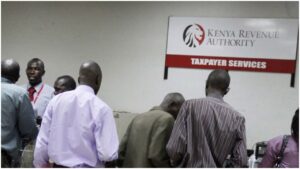Bad Debt Expense vs Allowance for Doubtful Accounts
Harold Averkamp (CPA, MBA) has worked as a university accounting instructor, accountant, and consultant for more is it time to switch to paying quarterly taxes than 25 years. Access and download collection of free Templates to help power your productivity and performance.
- Bad debt expense is something that must be recorded and accounted for every time a company prepares its financial statements.
- The key difference between bad debt and doubtful debt relates to the likelihood of nonpayment by a customer.
- Additionally, the allowance for doubtful accounts in June starts with a balance of zero.
- Bad debt is debt that creditor companies and individuals can write off as uncollectible.
- There are about 6.9 borrowers enrolled in the new IDR plan, and about 3.9 million of those have monthly payments of $0, according to the administraiton.
If $2,100 out of $100,000 in credit sales did not pay last year, then 2.1% is a suitable sales method estimate of the allowance for bad debt this year. This estimation process is easy when the firm has been operating for a few years. New businesses must use industry averages, rules of thumb, or numbers from another business. In applying the percentage-of-sales method, companies annually review the percentage of uncollectible accounts that resulted from the previous year’s sales. However, if the situation has changed significantly, the company increases or decreases the percentage rate to reflect the changed condition. For example, in periods of recession and high unemployment, a firm may increase the percentage rate to reflect the customers’ decreased ability to pay.
What Is Bad Debt? Write Offs and Methods for Estimating
There’s a reason that buy now, pay later companies, such as Affirm, Afterpay and Klarna, are so popular among shoppers. Buy now, pay later is now one of the fastest-growing categories in consumer finance, according to a separate report by Wells Fargo. In this post, you’ll get a clear grasp of the key differences between these two concepts, from timing of recognition to financial statement implications. In practice, adjusting can happen semiannually, quarterly, or even monthly—depending on the size and complexity of the organization’s receivables. For detailed expectations and guidelines related to write offs, see Writing Off Uncollectable Receivables.
In other words, bad debt is a form of borrowing that doesn’t help your bottom line. In this sense, bad debt is in contrast to good debt, which an individual or company takes out to help generate income or increase their overall net worth. Bad debt is any credit advanced by any lender to a debtor that shows no promise of ever being collected, either partially or in full. Any lender can have bad debt on their books, whether that’s a bank or other financial institution, a supplier, or a vendor.
The accounts receivable aging method is a report that lists unpaid customer invoices by date ranges and applies a rate of default to each date range. In the example above, we estimated an arbitrary number for the allowance for doubtful accounts. There are two primary methods for estimating the amount of accounts receivable that are not expected to be converted into cash. One method is based on sales, while the other is based on accounts receivable. Upon detailed analysis of the accounts receivable subsidiary ledger, it is found that one customer is having credit balance of $ 20,000. The allowance for bad debts is also called the allowance for doubtful accounts.
Definition of Allowance for Doubtful Accounts
In this case, perhaps only 1% of initial sales would be added to the allowance for bad debt. The allowance method records bad debt expense before specific accounts are written off. The allowance account balance is updated each period by recording bad debt expense or a contra expense account. The allowance account is meant to show the net realizable value of accounts receivable, whereas bad debt expense reflects actual uncollectible accounts written off during an accounting period. Let’s assume that a company has a debit balance in Accounts Receivable of $120,500 as a result of having sold goods on credit. Through the use of the aging method, the company sees that $18,000 of the receivables are 100 days past due.
The entry to increase the credit balance in these contra accounts is a debit to the income statement account Bad Debts Expense. The AR aging method groups all outstanding accounts receivable by age, and specific percentages are applied to each group. This method determines the expected losses to delinquent and bad debt by using a company’s historical data and data from the industry as a whole. The specific percentage typically increases as the age of the receivable increases to reflect rising default risk and decreasing collectibility. The second is the matching principle, which requires that expenses be matched to related revenues in the same accounting period they are generated. Bad debt expense must be estimated using the allowance method in the same period and appears on the income statement under the sales and general administrative expense section.
Fundamentals of Bad Debt Expenses and Allowances for Doubtful Accounts
However, on January 31 the company learns that an additional $1,000 of its accounts receivable may not be collected. Therefore, on January 31 the company will make an adjusting entry to debit Bad Debts Expense for $1,000 and to credit Allowance for Doubtful Accounts for $1,000. The provision for bad debts could refer to the balance sheet account also known as the Allowance for Bad Debts, Allowance for Doubtful Accounts, or Allowance for Uncollectible Accounts. If so, the account Provision for Bad Debts is a contra asset account (an asset account with a credit balance). It is used along with the account Accounts Receivable in order for the balance sheet to report the net realizable value of the company’s accounts receivable.
Free Financial Statements Cheat Sheet
In summary, balance sheet presentation and adjustments to the allowance account are directly interconnected, allowing the company to report a realistic net realizable receivables balance. We’ll show you how to record bad debt as a journal entry a little later on in this post. By analyzing such benchmarks, businesses can make informed decisions about their approach to managing their accounts receivable and avoiding potential financial losses.
Allowance for doubtful accounts calculation
Using the example above, let’s say a company expects that 3% of net sales are not collectible. The Internal Revenue Service (IRS) allows businesses to write off bad debt on Schedule C of tax Form 1040 if they previously reported it as income. Bad debt may include loans to clients and suppliers, credit sales to customers, and business-loan guarantees. However, deductible bad debt does not typically include unpaid rents, salaries, or fees. Bad debt expense also helps companies identify which customers default on payments more often than others. On March 31, 2017, Corporate Finance Institute reported net credit sales of $1,000,000.
Our accountants are trained in the most popular accounting software.
Buy now, pay later products are not regulated in the same way as credit cards, which means there may be fewer protections in place for consumers, Quinlan said. In addition, if a consumer misses a payment, there could be late fees, deferred interest or other penalties, depending on the lender. “What we have is a business model that is perfect for uncertain times,” Affirm co-founder and CEO Max Levchin said recently on CNBC’s “Squawk on the Street.”
You record the allowance for doubtful accounts by debiting the Bad Debt Expense account and crediting the Allowance for Doubtful Accounts account. You’ll notice the allowance account has a natural credit balance and will increase when credited. Management may disclose its method of estimating the allowance for doubtful accounts in its notes to the financial statements.







